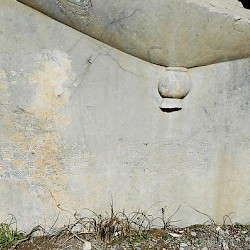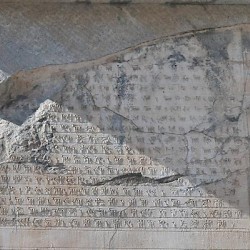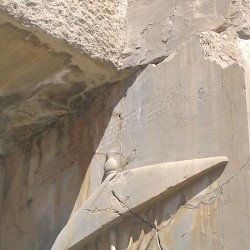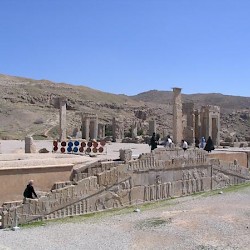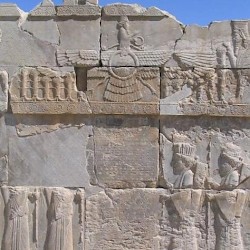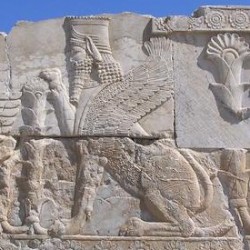Persepolis, Palace of Xerxes
Q5948317Persepolis (Old Persian Pârsa, modern Takht-e Jamshid): Greek name of one of the capitals of the ancient Achaemenid Empire, founded by king Darius the Great (r.522-486 BCE). There were several satellite sites, Naqš-e Rustam and Takht-e Rustam.
Palace of Xerxes (Hadiš)
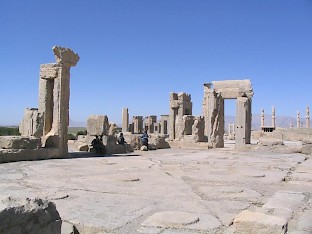
The palace of Xerxes at Persepolis, called Hadiš in Persian, "dwelling place", was twice as large as the Palace of Darius. A terrace connected the two royal mansions, which are not very far apart. Yet, compared to the palace of Darius, the house of Xerxes is badly damaged. A likely explanation is that it received a special treatment when the Macedonian king Alexander the Great destroyed Persepolis in the spring of 330 BCE. His soldiers were especially interested in the palace of the man who had once sacked Athens.
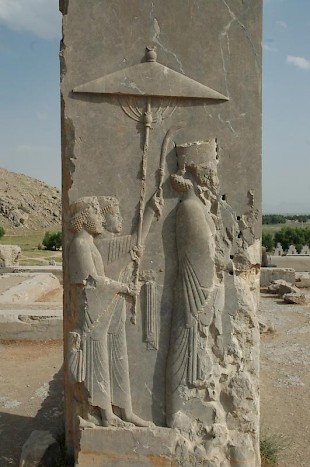
The relief on the second photo shows the great king leaving the palace and is an example of the destruction. The damages from the right are partly due to natural causes (and quite recent), but the face has been destroyed with a hammer, and someone must have made a great effort to create a hole near the king's ear. It was probably meant for a piece of cork that would have been wetted with vinegar. When heated, the cork would start to dilate and would ultimately blow the stone to pieces - a common practice in ancient stone quarries. For one reason or another, the cork and vinegar were never used.
The main room of Xerxes' palace had thirty-six columns and was surrounded by six smaller rooms: three to the east and three to the west. To the north was a portico, facing the Apadana. (Later, king Artaxerxes III Ochus constructed a palace between the two buildings.) The decoration of the northern portico was more or less identical to the palace of Darius: for example, there are reliefs of the king leaving his mansion, attended by people carrying a parasol and a fan.
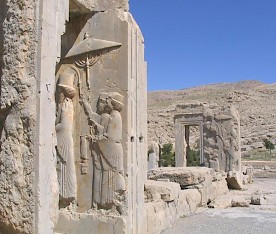
An inscription, known as XPe, written in Old Persian, Elamite and Babylonian, says:
Xerxes, the great king, the king of kings,
the son of king Darius, an Achaemenid.
There are almost similar inscriptions which mention Xerxes' father Darius (DPb). According to the inscription known as A1Pa, the palace was completed by Artaxerxes I Makrocheir, the son and successor of Xerxes.
The stairs from the palace of Darius to the interconnecting terrace (where Artaxerxes III would build his palace) belong to the best-preserved part of the complex. The central part of these stairs show Ahuramazda, flanked by two sphinxes, an inscription and several soldiers, which are sometimes called "apple bearers" or Immortals.
